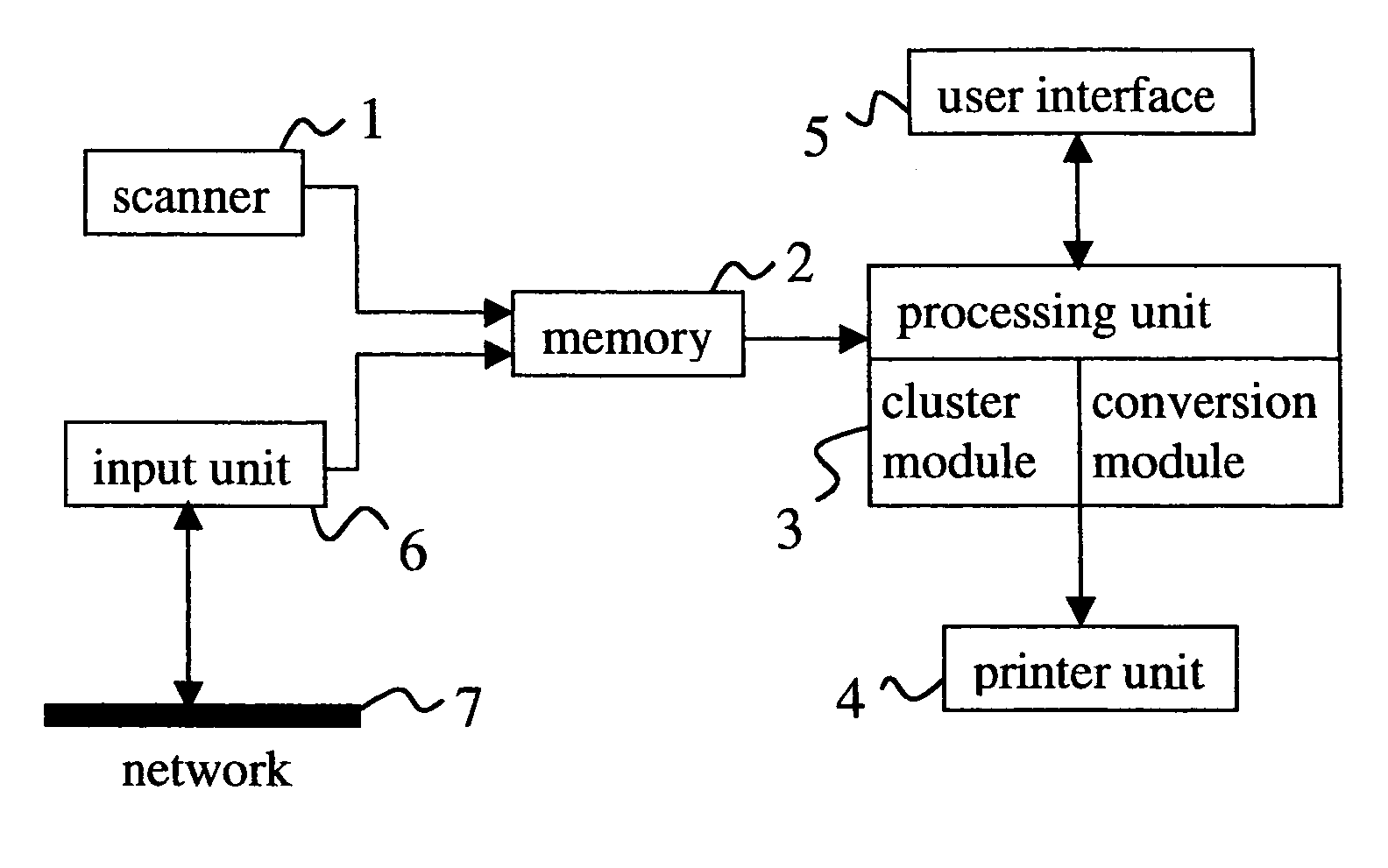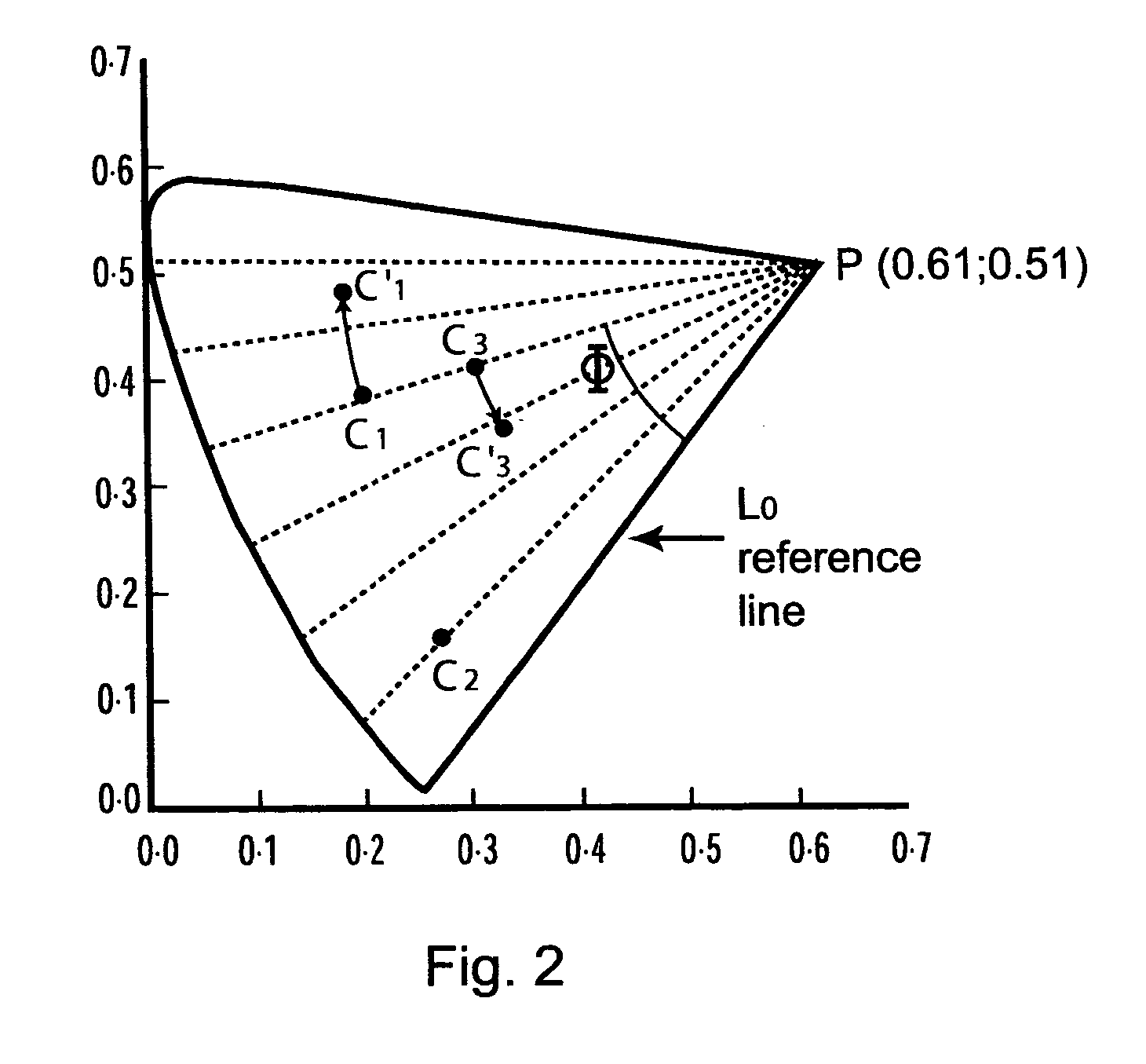Converted digital colour image with improved colour distinction for colour-blinds
a digital colour image and colour distinction technology, applied in image data processing details, instruments, image data processing, etc., can solve the problems of not being able to apply adapted design in reality, difficulty in implementing colour-blind documents, etc., to achieve the effect of convenient implementation
- Summary
- Abstract
- Description
- Claims
- Application Information
AI Technical Summary
Benefits of technology
Problems solved by technology
Method used
Image
Examples
Embodiment Construction
[0036]Human vision of colours is achieved via photosensitive cells in the eye, the rods and cones. The rods are used for the perception of lightness while the cones are used for trichromatic vision. Each of the three types of cones is used for the perception of a particular band of light spectrum, with sensitivity peaks situated around red, green or blue wavelengths.
[0037]When one of these cone types is missing, a person is a dichromat. Most of the times, the red sensitive or the green sensitive cones are missing. It can also happen that the receiving band of light spectrum of the red-sensitive cones is shifted towards green, or the other way around. In this case, a person with such a vision is said to be anomalous trichromat. Finally there is a very small group of people who perceive no colour at all, only lightness.
[0038]About eight percent of Caucasian men are colour blind. This is made up of 1% red-blind (protanope) and 1.1% green-blind (deuteranope) dichromats and of 1% red-ins...
PUM
 Login to View More
Login to View More Abstract
Description
Claims
Application Information
 Login to View More
Login to View More - R&D
- Intellectual Property
- Life Sciences
- Materials
- Tech Scout
- Unparalleled Data Quality
- Higher Quality Content
- 60% Fewer Hallucinations
Browse by: Latest US Patents, China's latest patents, Technical Efficacy Thesaurus, Application Domain, Technology Topic, Popular Technical Reports.
© 2025 PatSnap. All rights reserved.Legal|Privacy policy|Modern Slavery Act Transparency Statement|Sitemap|About US| Contact US: help@patsnap.com



